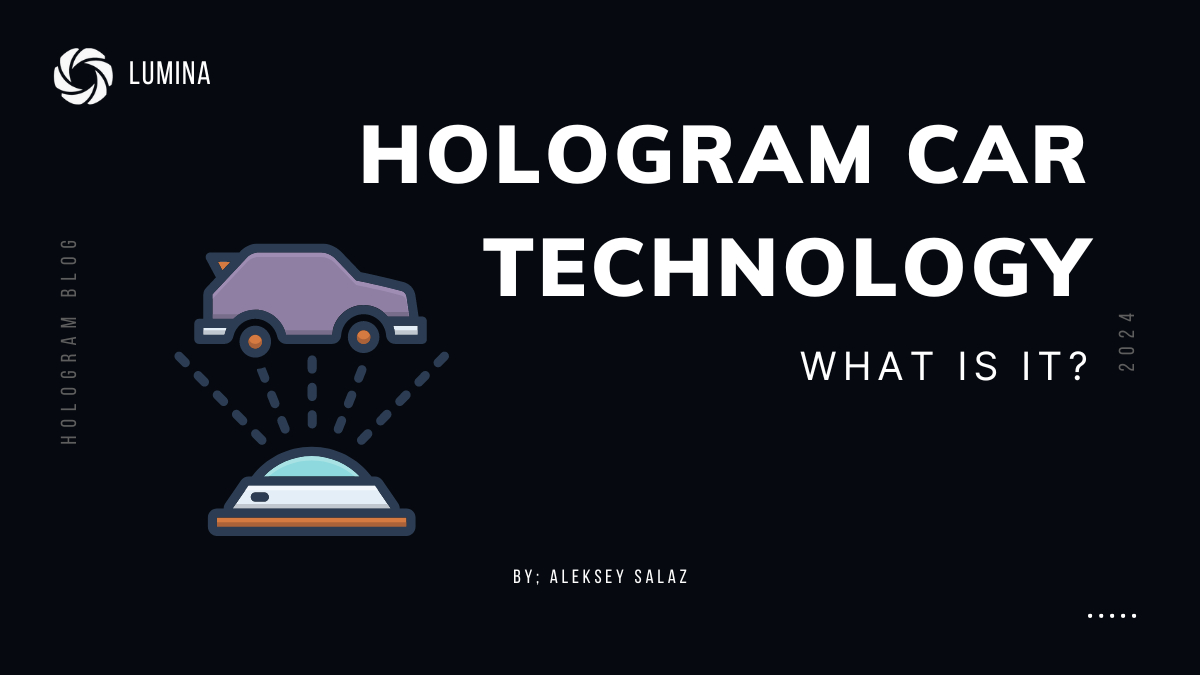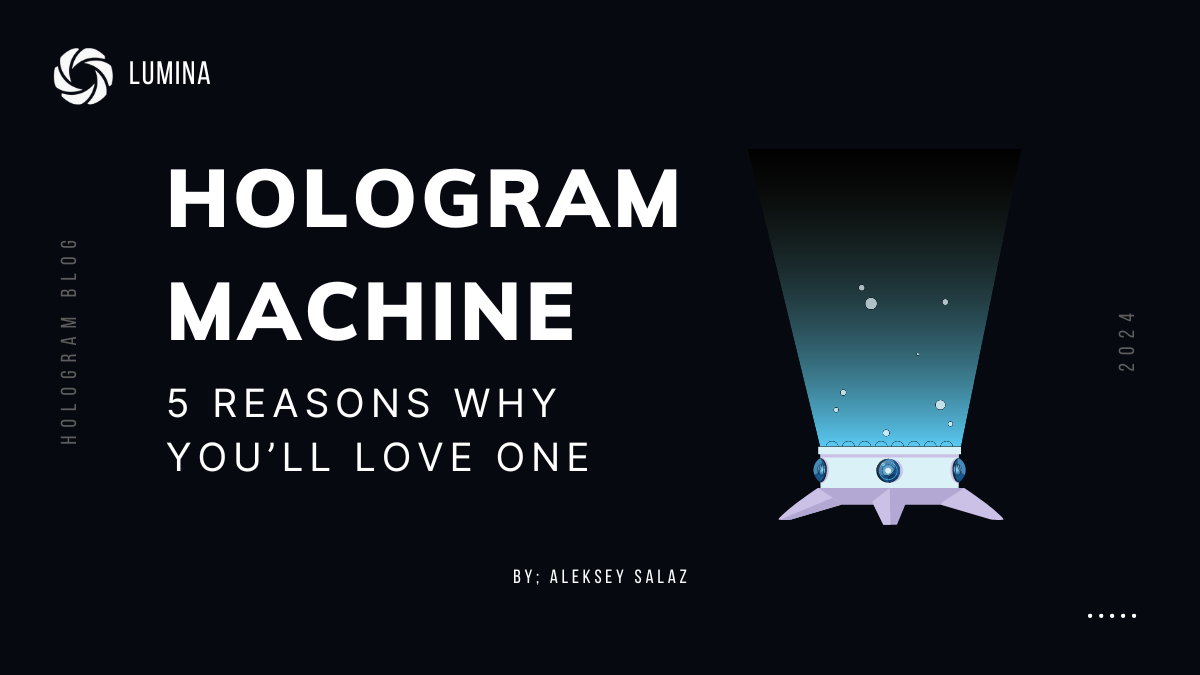What is a 'Hologram Car'?
In short, a hologram car utilizes advanced holography technology to either enhance the car's aesthetic appeal via hologram paint or to deliver critical information to the driver by projecting three-dimensional images in the car displays.
Key Parts:
- Holographic Paint: By using holograms, the car's surface displays different colors or patterns depending on the light's angle and intensity, giving the vehicle unique effects and an eye-catching look.
- Holographic Car Displays: A step-up from traditional flat display screens, the car's dashboard or windshield projects three-dimensional information that appears to float above them, enhancing functionality and ensuring safety.
With this technology, Lacquer loses its single-tone look while driving becomes a futuristic, interactive experience.

So, are you ready to discover the mesmerizing world of hologram car technology? Hold on to your hats as we delve into the science behind it, its applications, the benefits, the drawbacks, and of course, the future prospects.
First, let's break down the concept of holograms in cars and how this seemingly science-fiction technology has evolved over the years in the automotive industry. As we at Lumina always say, understanding the core principles behind technology helps us appreciate it more and uncover its potential. The same is true for hologram car technology. Let's get started!
The Use of Holograms in Car Paint
The Science Behind Holographic Car Paint
Holographic car paint is a magnificent blend of art and science, offering a unique aesthetic appeal to the vehicle. At the heart of this technology is the concept of holography. Holography involves recording and reproducing light wave patterns to create a three-dimensional image. In the case of car paint, holograms are recorded on a special film that can then be used to create holographic effects on car surfaces.
When light hits these surfaces, it interacts with the holographic film, creating different patterns and colors depending on the angle and intensity of the light source. This light interaction can also change with the movement of the car or the observer, creating a dynamic visual experience.
Examples of Cars with Holographic Paint
Several high-end car manufacturers have already embraced holographic car paint, creating some truly eye-catching designs. For instance, the Lamborghini Aventador LP 700-4 Pirelli Edition features a thin red stripe along its body that morphs into a Pirelli logo when viewed from specific angles.
Similarly, the BMW i8 Concept Spyder boasts a silver-blue paint that shifts to turquoise-green under different lighting conditions. Lastly, the McLaren Speedtail has a carbon fiber body enriched with titanium oxide particles that reflect light in a spectrum of colors.
Pros and Cons of Holographic Car Paint
The prime advantage of using holograms on car paint is the unique and captivating visual effects they offer. Holographic car paint can significantly enhance a vehicle's aesthetic appeal, making it stand out on the road.
However, there are a few drawbacks to consider. Holograms on car paint are susceptible to damage from scratches or abrasions, and they can cause unwanted reflections or glare that might affect visibility or safety. Therefore, if you decide to use holograms on your car paint, it's crucial to use high-quality materials and techniques and shield your car from external factors that could cause harm.
Holograms in Car Displays
As we continue our journey into hologram car technology, it's crucial to understand that beyond the captivating aesthetics of holographic car paint, there's another fascinating implementation: holographic car displays.
The Role of Holograms in Car Displays
Holograms on car displays serve a functional and interactive role. The technology allows three-dimensional images or information to appear as if they're floating above the car’s dashboard or windshield. This can include navigation directions, traffic alerts, pedestrian detection, or even entertainment features.
As a result, holograms on car displays enhance the user experience by providing immersive and interactive experiences. Not only do they make driving more enjoyable, but they also improve safety by highlighting potential hazards or warnings in real-time.
Examples of Cars with Holographic Displays
Several vehicles have already begun to implement this technology. The Continental 3D Lightfield Centerstack, for instance, uses screen technology that creates a 3D look without the need for glasses. It can display various types of content, from navigation maps to media controls.
Another example is the Envisics AR-HUD, an augmented reality system that uses laser-based holography to project visuals that appear in front of the car. These displays can highlight pedestrians, stalled vehicles, and turn-by-turn directions as 3D overlays.
The Future of Holographic Car Displays
As technology continues to evolve, we can expect holographic car displays to become more commonplace in the automotive industry. However, challenges lie ahead, such as ensuring compatibility across different devices and platforms, and maintaining reliability under various environmental conditions.
At Lumina, we are committed to playing a part in this future. We believe that our 3D LED displays have the potential to revolutionize the way information is presented and interacted with in cars.
Through our continued research and innovation, we aim to enhance the driving experience by making it more engaging, informative, and above all, safer.
As we look forward to a future where hologram car technology is the norm rather than the exception, we invite you to join us in embracing this exciting frontier in automotive technology.
The Process of Fixing Paint Holograms
A car's paintwork is its first line of defense against environmental elements, and it's also what gives a car its beautiful shine. However, improper care and maintenance can result in paint holograms, also known as micro-marring. These holograms can detract from the beauty of your car, but thankfully, they can be fixed.
Causes of Paint Holograms
Paint holograms are often caused by poor polishing techniques, abrasive car wash brushes, contaminated wash mitts, and low-quality towels. When exposed to direct sunlight, these holograms give the paint finish a distinctive three-dimensional look, resembling swirl marks amplified.
Step-by-Step Guide to Fixing Paint Holograms
Fixing paint holograms is a process, but with a bit of patience and the right tools, it can be done by anyone.
- Prepare the Surface: Start by washing and drying the car's paintwork correctly. This ensures that the surface is clean and free of any contaminants that could hinder the polishing process.
- Sealing: The final step is to seal the finish with a premium protectant to provide long-lasting protection and an impressive gloss.
Tips for Maintaining a Hologram-Free Car Paint
Maintaining a hologram-free car paint is primarily about prevention. Here are a few tips:
- Use the Right Tools: Opt for high-quality wash mitts, towels, and brushes that are gentle on the car's paint.
- Polish Correctly: Use proper techniques when polishing, and don't apply too much pressure.
- Clean Regularly: Regular cleaning helps prevent the buildup of contaminants that can cause holograms.
- Protect the Paint: Use a good quality sealant to add a layer of protection to the car's paint.
A hologram-free car paint not only enhances the beauty of your car but also preserves its value. With the right care and maintenance, your car's paintwork can stay hologram-free and beautiful for a long time.
Holographic Head-Up Displays (HUDs) in Cars
The world of automotive technology is rapidly evolving, and one of the most exciting advancements is the introduction of holographic Head-Up Displays (HUDs). But what exactly are these, and how do they enhance road safety? Let’s delve into the fascinating world of holographic HUDs.
Understanding Holographic HUDs
A holographic HUD is an innovative display system designed to provide drivers with vital information, such as speed or navigation directions, without requiring them to shift their gaze from the road. Unlike traditional HUDs, which project a virtual image onto the windshield, holographic HUDs use spatial light modulators to create a more dynamic, high-resolution display.

This technology is not entirely new, with cars as old as the 1988 Oldsmobile Cutlass having introduced the concept of displaying information on the windshield. However, the use of holographic technology takes the concept to the next level, offering a more immersive and interactive experience for drivers.
The Role of Holographic HUDs in Enhancing Road Safety
One of the primary goals of holographic HUDs is to enhance road safety. The idea is simple: by keeping crucial information in the driver's line of sight, they can stay focused on the road, reducing the need for distractions such as checking the speedometer or a navigation system.
But holographic HUDs can do much more. For instance, companies like Envisics are developing systems that can highlight potential collision points, outline pedestrians and cyclists, and even identify hazardous off-road obstacles, such as poles and bodies of water. These features are designed to increase driver awareness and response time, potentially saving lives.
Future Projections for Holographic HUDs in the Automotive Industry
The future looks bright for holographic HUDs in the automotive industry. According to Envisics, a leading company in the field, the market for this technology is expected to grow rapidly, with an estimated 19.1 million units available by 2032.
Major car manufacturers such as GM, Stellantis, Hyundai, and Jaguar Land Rover are already investing in this technology, with plans to include second-generation HUDs in upcoming models like the 2024 Cadillac Lyriq.
As we continue to develop and refine this technology, we can expect to see even more advanced features, such as augmented reality integration, that will make driving safer and more enjoyable.
At Lumina, we are excited to be part of this journey, and we look forward to seeing how holographic HUDs will revolutionize not only the driving experience but also the wider automotive industry.
Conclusion: The Future of Hologram Car Technology
As we shift gears and look down the road, the future of hologram car technology appears bright and full of potential. The intersection of automotive innovation and holography can potentially revolutionize the way we interact with our vehicles, making driving safer, more enjoyable, and more immersive.
The Potential of Hologram Technology in Cars
From holographic car paint that changes colour based on the light's angle and intensity, to holographic displays that provide real-time, three-dimensional information, the possibilities seem endless. Hologram technology has the potential to transform not just the aesthetic appeal of vehicles, but also their functional aspects. This includes navigation, hazard detection, and even entertainment features.
These advancements will not just be limited to luxury or concept cars. As the technology becomes more mainstream and cost-effective, it is likely to become a standard feature in many vehicles. Imagine a future where your car's dashboard provides a 3D display of turn-by-turn navigation or highlights potential hazards in real-time, enhancing safety and functionality.
Challenges and Opportunities in the Adoption of Hologram Car Technology
However, while the potential of hologram car technology is immense, it's not without its challenges. One of the main hurdles is the durability and reliability of holograms under various environmental conditions. For instance, how will holographic paint respond to harsh weather or wear and tear over time? How will holographic displays perform under different lighting conditions?
Moreover, there are also concerns about data privacy and security, as well as standardization across different devices and platforms. It's crucial to ensure that as we embrace this technology, we also address these potential challenges head-on.
Regardless of the challenges, the future of hologram car technology is undoubtedly promising. It offers a new dimension of interactivity and immersion that could redefine the way we perceive and interact with our vehicles. As we continue to innovate and push the boundaries of what's possible, we are excited to be a part of this journey and can't wait to see what the future holds.
For more insights into the fascinating world of holographic technology, be sure to check out our blog or explore our range of holographic fans and 3D LED displays that are revolutionizing industries beyond just automotive.

As we stand on the cusp of a holographic future, let's gear up to embrace the magic of three-dimensional visualization in our cars, taking the driving experience to a whole new level. The journey ahead is exciting, and we at Lumina are thrilled to be a part of it.


